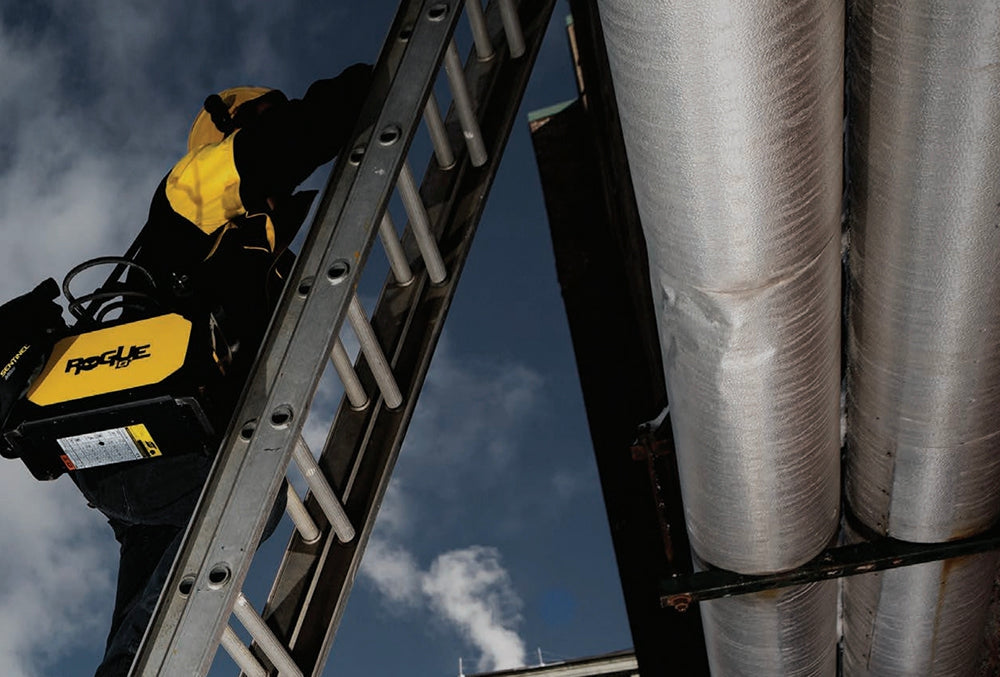Darkness. An engulfing, black void like you’ve never experienced before. Beyond your small headlight, the world is simply gone: No shapes, no faint colors, just emptiness. Everything feels so empty, you begin to see things that aren’t there. As one saturation diver said, “When you’re out that deep in the water, your brain tries to fill the void. At least, I hope it was my brain doing that.”
Saturation diving is one of the most unique, otherly world experiences that any welder could have. It’s the ultimate combination of fear, risk, reward and isolation. With the dangers involved comes one of the biggest paychecks in the industry. But what is saturation welding really like and is the money worth it?

What is Saturation Welding?
If you’ve ever dove deep down into a pool, you might have felt a lot of pressure on your head. As you dive further and further, your body is exposed to more and more pressure from the water around you.
The reverse happens as well. If you start deep underwater and swim towards the surface, less and less pressure is put on your body (and the air inside of it). This is why divers are taught not to hold their breath if they have to quickly ascend underwater. As they rise, the air in their lungs will expand, eventually rupturing the organs if not exhaled.
For deep sea divers, the biggest problem is nitrogen bubbles, which come into our bloodstream through the air we breathe. Normally, these bubbles are so small, they easily pass through our veins without any issues. But if you’re on the bottom of the ocean and begin trying to rise back up to the surface, the bubbles will expand and block off blood flow (similar to a stroke or heart attack). Divers must slowly ascend to the surface in order to give the nitrogen bubbles enough time to leave their body.
When you’re deep below the surface of the ocean, slowly rising to the top would take days. Instead, welders who work at these depths live inside a compression chamber: a type of trailer-size pod that has been pressurized to match the same conditions as the ocean depths. This way, nitrogen bubbles inside the divers’ blood will never expand, allowing the divers to work deep underwater for weeks at a time.
What’s It Like to Weld that Deep Down?
Instead of the normal 9 to 5, saturation welders will often work month-long shifts. Once you’ve been pressurized, you’re completely isolated from the world. Besides the ocean depths, all you have is your compression chamber. Most of these pods are built like mini-houses, with showers, kitchens and bunks for multiple divers. That might almost sound like normal life, but that’s where the similarities end.
When compressed to extreme levels, oxygen can become dangerous. Because of this, saturation divers breathe a mixture containing helium. This gives them 24/7 chipmunk voices. At first, it’s quite funny. After a while, it’s madness.
The darkness is also something most people don’t initially think about. At these depths, no light makes it to the ocean floor. Without your headlamp, you could not see your hand if you placed it right against your diving helmet. As one diver stated, “It’s pitch black and your lamp barely goes more than a few yards effectively. It's seriously like being in a void.”

What Type of Welding Do Saturation Divers Do?
As you might have guessed, water and the typical welding processes don’t mix together too well. On top of that, air isn’t the only gas affected by the highly pressurized ocean depths. Normal welding gases would become compressed, making them behave differently than they do on the surface.
Underwater welders use a type of process called Hyperbaric welding. This was specifically designed for high pressure, underwater conditions. For the best welding quality, various devices can be used to remove water around the weld, allowing the welder to perform a “dry” hyperbolic weld. However, in many cases, the weld is done “wet.”
This creates a unique challenge. With normal welding, you’re trying to remove as many particles as possible from around your weld that could contaminate it. That’s much more difficult when you’re completely surrounded by water full of tiny specks of dirt and other contaminants. Because of this, wet hyperbaric welding can feel almost sloppy to someone unfamiliar with it.
This is further complicated by how quickly metal rusts underwater. Getting a clean welding surface is often an impossible task.
As for the types of jobs, the majority of saturation welding work involves underwater pipes or maintenance on permanent oil rigs. That being said, saturation divers have also been employed for everything from removing shipwrecks to installing and maintaining underwater research projects.

How do I Become a Saturation Welder?
The US only has about 300 saturation divers currently employed, with only a portion of those being trained welders. Because saturation diving has so many potential risks, only experienced underwater welders are ever considered for the job. Many positions require:
- A professional commercial diving certification
- Several years of underwater welding experience
- Experience with mixed-gas diving
While that might seem like a hefty list of requirements, the pay is designed to match. The more experienced saturation divers can make over $200,000 a year, and some highly specialized saturation divers claim to make over $30,000 a month. That’s right, month, not year. Whether that type of money is worth the risk is totally up to you.
Whether or not you’d ever consider saturation welding, laying high-quality beads is the goal of any welder, below or above water. A large part of that ultimately depends on the equipment you use, no matter how skilled you are. That’s why IOC only stocks brands with a legacy of reliability. Don’t trust your next purchase to some shady online store or a brand you’ve never heard of. Before you buy, make sure you always visit Welding Supplies from IOC to get the best prices and customer service in the industry.





